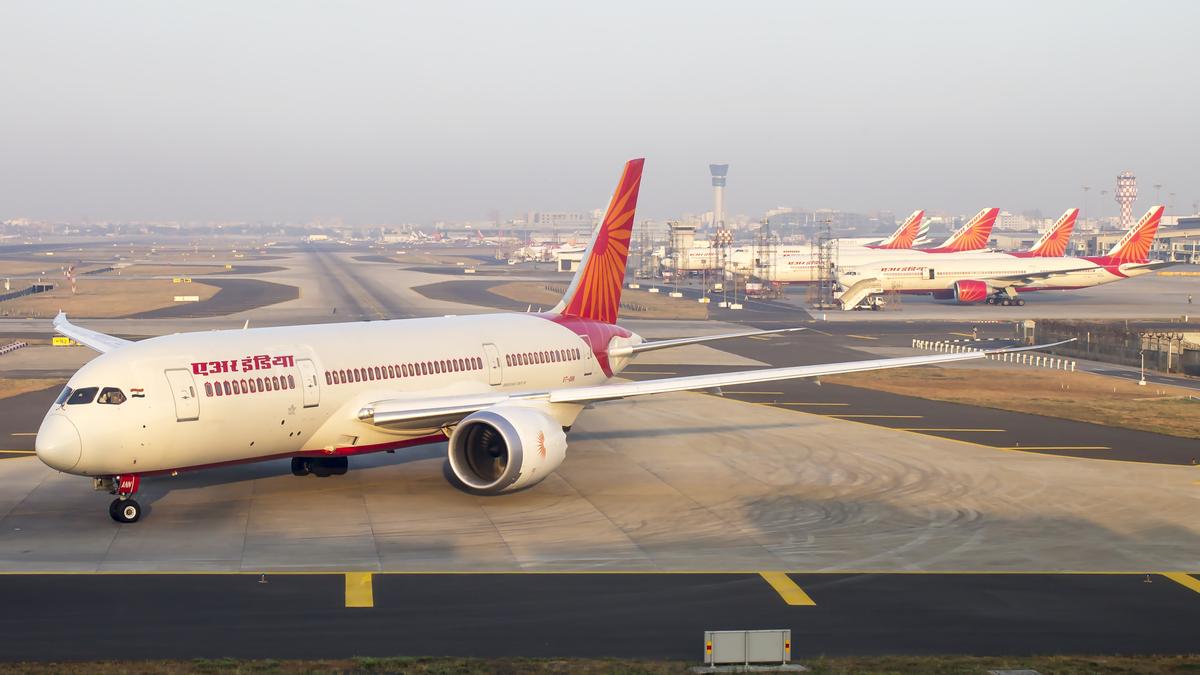“This is a walk through our lives, a timeline that covers significant moments... But what we need now is not just attention but a raise in our minimum wage,” said Naveen Kumar, a garment worker from Srirangapatna, who was at the exhibition titled “Stitching Lives: Garment Work and Activism in Bengaluru.”
The exhibition, which opened at Karnataka Chitrakala Parishath on Saturday and is open till Sunday evening, brings to light two decades of organising and unionisation among the city’s garment workers.

Visitors at ‘Stitching Lives: Garment work and Activism’, an exhibition at Karnataka Chitrakala Parishat in Bengaluru on Saturday. | Photo Credit: K. MURALI KUMAR
Curated from the archives of the Garment and Textile Workers Union (GATWU) and Garment Mahila Karmikara Munnade, the show highlights the lives of women workers who form the backbone of the city’s garment industry but are often absent from the city’s mainstream narratives.
IT-centric imagination
By placing their stories within the city’s larger history, “Stitching Lives” seeks to challenge the IT-centric imagination of Bengaluru and opens up a space for dialogue on the dignity of garment work and workers’ rights, according to the organisers of the exhibition.
Prathibha R., collaborator, GATWU, said, “We organised this exhibition to understand the timeline of the invisible workforce comprising lakhs of women workers in the State.” She added that with focus constantly directed towards the IT sector, it gets harder to curate their voices to reach the government and authorities to force initiatives.

Visitors at ‘Stitching Lives: Garment work and Activism’, an exhibition at Karnataka Chitrakala Parishat in Bengaluru on Saturday. | Photo Credit: K. MURALI KUMAR
Swathi Shivanand, curator of the exhibition, remarked, “This 20-year timeline is a public display that explores the careful intersection of women workers as both women and workers in their respective domains.” The collaboration commenced five years ago to archive, document, and preserve these histories that are invisibalised.
Slow hike
K.R. Jayaram, advisor, GATWU, remembered times back in 2001 when wages were as low as ₹71 a day. “With constant push and multiple petitions, a reform was made in 2014 with a daily wage of ₹252.”
He added that the State has 83 scheduled employments, out of which 80 streams have an average wage of ₹675 a day, in contrast to garment workers who, even today, make only about ₹479 a day. He pointed out that today more than 25%-30% in the sector are migrant workers.
The exhibition is aided by the India Foundation for the Arts (IFA) under its Project 560 programme, with the support of BNP Paribas India.



.png)
.png)
.png)
















 10 hours ago
3
10 hours ago
3







 English (US) ·
English (US) ·